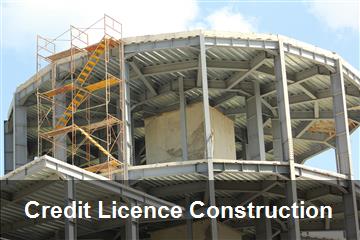
18 set 2024
Starting October 1, a new credit license requirement will impact 800,000 construction companies in Italy.
This mandate, introduced by the Dl Pnrr 19/2024, aims to combat irregular labor and enhance safety in construction and civil engineering projects.
The credit license will be issued by the National Labor Inspectorate (Inl) and will require companies to meet specific criteria.
The initiative also includes the hiring of 750 new safety inspectors.
While the measure is seen as a positive step towards transparency and safety, it raises concerns about its impact on younger companies.
This article delves into the details of the new regulation, its scope, and its potential implications for the construction industry.
From October 1, 2024, a significant regulatory change will affect the construction industry in Italy.
A new credit license requirement, mandated by the Dl Pnrr 19/2024, will become essential for 800,000 companies operating in temporary or mobile construction sites.
This initiative aims to curb irregular labor practices and elevate safety standards in construction and civil engineering projects.
The credit license system, introduced under Article 29, paragraph 19 of the Dl Pnrr 19/2024, is designed to ensure that companies meet specific safety and operational criteria.
The National Labor Inspectorate (Inl) will issue these licenses electronically, following a thorough verification process.
Companies must demonstrate compliance with various requirements, including continuous contribution payments and adherence to safety regulations.
The scope of this new regulation is extensive.
It encompasses not only traditional construction activities but also the installation of electrical and plumbing systems, thermal, acoustic, and vibration insulation work, as well as civil and public utility engineering projects.
However, it excludes professionals who provide only intellectual services or supplies.
The initial credit allocation for each company is 30 points, which can be increased based on the company's longevity and compliance with safety regulations.
Additional credits can be earned through investments in safety measures and employee training.
This system aims to reward companies that prioritize safety and have a proven track record of compliance.
Interestingly, companies that already possess the Soa qualification in class III or higher are exempt from this new requirement.
The Soa qualification is mandatory for companies undertaking public works worth 150,000 euros or more and, since July 2023, for those involved in superbonus-related projects exceeding 516,000 euros.
Currently, around 30,000 companies hold the Soa qualification, with approximately 24,000 eligible for exemption from the new credit license requirement.
The construction sector in Italy is vast, with 832,547 companies registered with the Chambers of Commerce, according to Unioncamere-Infocamere.
This sector includes a wide range of activities, from building construction to the installation of various systems and civil engineering works.
Notably, over half of these companies (54.9%) are individual enterprises, while 32.8% are capital companies, 9.29% are partnerships, and 2% are cooperatives.
The regions with the highest concentration of construction companies are Lombardy, Lazio, and Campania.
The introduction of the credit license is part of a broader effort to combat undeclared work and improve safety standards in the construction industry.
To support this initiative, a call for applications is open until August 28 for the recruitment of 750 new technical inspectors specializing in health and safety at work.
These inspectors will join the existing 877 inspectors at the Inl, working alongside local health authorities to ensure compliance with safety regulations.
While the new credit license system is seen as a positive step towards greater transparency and safety, it has raised some concerns.
Matteo Benozzo, a partner at B-Hse, a law firm specializing in environmental and safety law, points out that the effectiveness of this measure depends on rigorous enforcement. "Increasing the obligations for all companies makes sense only if there are effective controls to ensure compliance," he says.
Benozzo also highlights a potential drawback of the system: it may disadvantage younger companies that invest in safety but lack the longevity to earn additional credits.
In conclusion, the new credit license requirement represents a significant shift in the regulatory landscape for the construction industry in Italy.
While it aims to enhance safety and reduce irregular labor practices, its success will depend on effective implementation and enforcement.
The industry will need to adapt to these changes, balancing the need for compliance with the challenges posed by the new system.
Critical Aspects and Potential Issues
1. Enforcement: The success of the new credit license system hinges on rigorous and consistent enforcement by the National Labor Inspectorate and other relevant authorities.2. Impact on Young Companies: The system may inadvertently disadvantage newer companies that invest in safety but lack the longevity to earn additional credits.
3. Administrative Burden: The process of obtaining and maintaining the credit license could impose a significant administrative burden on companies, particularly smaller enterprises.
Common Pitfalls and Errors
1. Non-Compliance: Companies may struggle to meet the stringent requirements for obtaining the credit license, leading to potential non-compliance and penalties.2. Misunderstanding Exemptions: Companies may misunderstand the criteria for exemption, particularly regarding the Soa qualification, leading to unnecessary compliance efforts.
3. Inadequate Preparation: Companies may fail to adequately prepare for the new requirements, resulting in delays and disruptions to their operations.

